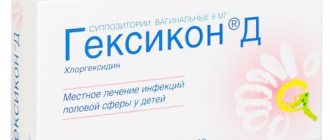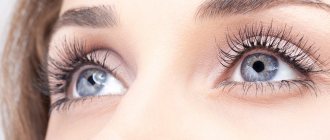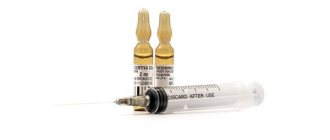Where is Chlorhexidine used?
The pharmaceutical product is used for the treatment and prevention of diseases caused by microorganisms sensitive to Chlorhexidine.
Depending on the concentration of the substance, the medicine can be used in the treatment of various pathologies.
After operations, in order to prevent infectious pathologies, doctors resort to using a pharmaceutical solution.
Chlorhexidine is often used for dental purposes for the treatment of dentures. In some cases, medication is used to treat periodontitis, stomatitis, and they are used to rinse the gums.
The medicine is used in:
- Urology
- Gynecology
- Surgery
How often can you gargle with chlorhexidine?
If throat diseases occur very often, then you should definitely consult a doctor. Most likely, he will prescribe the necessary tests. It is possible that a bad bacteria has settled in the oral cavity, which releases spores and provokes illnesses, or it acts as a signal of another disease.
- Chlorhexidine must be handled very carefully. Do not exceed rinse time and medication concentration (as well as dosage).
- Do not use for more than 15 days!
- The minimum break between courses of treatment should be 1-2 months. And we have already stated that frequent viral diseases signal other problems (possibly with immunity).
- You can rinse 2-3 times a day (sometimes the doctor prescribes 4). In the first days of illness, you can rinse more often (every 3-4 hours).
- And we remind you once again - do not self-medicate! Only your attending physician, knowing all the tests and causes of the disease, can prescribe the correct dosage, regimen and duration of treatment.
Contraindications
Chlorhexidine is contraindicated:
- In case of hypersensitivity to the components of the drug
- People suffering from dermatitis
- Do not use together with other antiseptics, for example, with hydrogen peroxide
- For ophthalmic use, rinsing the eyes with this product is prohibited.
- For disinfection of the surgical field
- After intervention on the auditory canal and central nervous system
It is important to know that the pharmaceutical product should be used with caution when treating children.
Indications for use
Indications for use of the drug include:
- Carrying out disinfection of wounds of various types, including those on mucous membranes.
- Use as part of complex therapy in the treatment of various fungal infections.
- Preventive treatments to prevent STDs.
- Treatment of oral diseases such as gingivitis, periodontitis and stomatitis.
When treating wounds, cuts, abrasions and other injuries, the solution is applied directly to the surface of the skin and injury without the use of gauze pads or cotton swabs (discs). To carry out the treatment, simply pour the composition onto the damage after preliminary cleaning.
It is important to remember that when treating skin and soft tissue injuries, bleeding should be stopped before filling the wound with Chlorhexidine, since the drug does not have a hemostatic effect.
To disinfect injured areas, a solution of concentration from 0.05 to 0.1% is used. The same solution (in the same concentration) can be used to carefully treat the surface of burns, including chemical and thermal ones. In this case, the solution will work not only as an antiseptic, but also as a means of cooling the surface, as well as washing away chemicals from the skin and the site of damage that led to the burn.
Chlorhexidine is often used for dressings instead of hydrogen peroxide. Wounds, including purulent ones, are washed with the solution, the hands of medical personnel are treated, and bandages that have dried to the wounds are watered for painless and careful removal.
Brief instructions for use
To prevent sexually transmitted diseases, after unprotected sexual intercourse, after a maximum of 2 hours, 2-3 ml of a 0.5% solution should be administered into the urinary canal of a man, 1 ml into the canal for women and 5-10 ml into the vagina. You can treat skin areas near the genitals with the product. After administering the drug, try to postpone urination for 2 hours.
Your doctor should tell you about douching for gynecological diseases.
For sore throat, rinse the mouth with 0.5% or 0.2% Chlorohexidine solution.
For inflammatory pathologies of the urinary tract, it is necessary to inject 2-3 ml of 0.05% of the product into the urinary canal.
Before using the drug, you should consult your doctor.
Using chlorhexidine for a child's throat: instructions, how to dilute, dosage
Any medication should be given to children under 12 years of age with great caution, and under 6 years of age even more carefully. Of course, for children under one year old or even up to 2-3 years old, this method of treatment is out of the question. After all, they still don’t know how to gargle, and even more so, they may also forget to spit out the medicine.
- And the point is not only that they do not know how to properly handle such a drug. After all, even at the age of six, you need to monitor so that the baby does not swallow the medicine, and gargle enough time.
- The fact is that such a drug is considered a very strong antiseptic and, yes, copes well with inflammation. But! It can cause an allergic reaction (children simply have a more sensitive and receptive body), can provoke irritation and cause a burning sensation.
IMPORTANT: All this, of course, depends on the individuality of each organism. Not everyone may experience the above symptoms. But this medicine should be given only after the doctor’s approval and his recommendations in terms of dosage.
How to give chlorhexidine to children. If the doctor insists that it is necessary to use it for children under 2 years of age, then:
- It is better to wipe with a cotton swab dipped in a diluted solution.
- Be sure to make sure that you do not try to suck out liquid from the same tampon or try to swallow it
- To reduce this risk as much as possible, place the baby on his side (head facing straight) so that excess fluid can drain out easily.
- For children of any age (meaning up to 12 years old), only a 0.05% solution can be taken for gargling.
Some doctors do not recommend using a diluted drug because its effectiveness decreases. This means that it takes more time to kill all (well, or most) germs and bacteria.
And if you rinse for too long, then you may experience dry mouth and a burning sensation. Although a highly concentrated drug can cause these symptoms. Therefore, strictly follow your doctor's recommendations.
- Up to 6 years it is better to dilute it with boiled water in a ratio of 1:2
- Over 6 years old (and up to 12) you can slightly reduce the amount of water to a dosage of 1:1
- Just like adults, you need to carry out the procedure only after eating and, preferably, rinse your mouth to remove any leftover food.
- The maximum single dose is 1 tsp.
- You need to gargle (or simply wipe your mouth) in the morning and evening. If the child is older or the complexity of the disease requires it, the doctor may prescribe this operation 3 times a day. But for children this is the maximum!
- And, of course, do not eat for 1.5-2 hours. Drinking is also not advisable.
- It should be taken until the patient’s health improves permanently. In principle, a significant result is visible within a week.
Under no circumstances should you take it for more than 15 days! This applies to both children and adults. Although there are practically no cases of overdose, you should be careful:
- If itching or dry mouth occurs, be sure to notify your doctor. He may prescribe a different medicine or reduce the dosage.
- Also, a change in taste may be a signal of an overdose.
- If the enamel has changed color, you should also be wary.
- In some cases, tartar may develop.
- And if an allergic reaction occurs or dermatitis appears, then it is urgent to stop rinsing with chlorhexidine.
As a rule, after stopping the drug, all symptoms go away on their own within a few days.
Where to put candles
Depending on the type of disease, the method of administering Chlorhexidine suppositories can be different: rectal or vaginal.
But it is important to understand that the use of suppositories is only permissible as prescribed by a doctor.
Before using the suppository, you need to wash and dry your hands well, then you need to remove it from the package and insert it into the vagina in a lying position.
To avoid leakage of the drug, do not rush to get out of bed.
Chlorhexidine suppositories help well with thrush and cystitis.
How to use chlorhexidine for colds?
This drug is good not only for treating a sore throat, but will also have a positive effect when you have a runny nose. Of course, with a cold, nasal congestion often occurs and can last for a long time.
The main purpose of chlorhexidine for colds is to rinse the nose. To do this, you should follow a few simple rules.
- The first thing to do is to thoroughly clear the nasal passages of mucus (as much as possible).
- Chlorhexidine, do not forget, should be warm or at room temperature.
- Lie on your side and instill liquid into the upper nostril. And from the second the contents should flow out.
- If suddenly the medicine gets into the mouth, then it must be spat out.
- And there are also small restrictions - you cannot lie down for an hour! Because residual liquid can still penetrate inside.
- Chlorhexidine at a concentration of 0.05% is also suitable for the nose. There is no need to dilute it; we have already said that this weakens the medicinal properties of the drug.
Why is Chlorhexidine better than peroxide?
- Hydrogen peroxide and Chlorhexidine are antiseptics. Medicines differ in their spectrum of effects and medicinal properties.
- Hydrogen peroxide, unlike Chlorhexidine, is available in only one dosage form, which is not very convenient.
Chlorkesidine suppositories are used for the treatment of gynecological and urological pathologies.
Both products disinfect wounds and abrasions well.
Chlorhexidine has a wider range of therapeutic effects; it is used to treat the hands of the surgeon and nurse before surgery, and it is also used in gynecology.
Is it possible to spray chlorhexidine down children's throats?
Yes, this drug is available not only in the form of a solution, but also as a spray or suppositories (vaginal). And, naturally, the question arises: is it possible to spray your throat with such a spray? After all, it’s much more convenient (especially when it comes to throat diseases). Let's think logically and sort everything out in order.
- Yes, the spray is really more practical in this matter. After all, they can reach much further. But, as a rule, it is used after rinsing. After we have washed away all the germs, we need to drop something in to soothe and give an additional healing effect. Now we are talking about other throat sprays.
- But! When we spray a spray down the throat, where does the liquid go? That's right, we swallow it. Even an adult will find it difficult to spit out the contents.
- Therefore, children under 12 years of age are strictly prohibited from spraying the spray. And for adults too. This drug is very concentrated and toxic, so it can damage the mucous membrane of the throat.
- In general, the spray has a direct purpose - it is the treatment of hands and surfaces.
IMPORTANT: We remind you! What is prohibited from swallowing chlorhexidine! Chlorhexidine can only be used as a throat irrigant.
How to irrigate the throat with chlorhexidine:
- It is more convenient to perform this procedure using a syringe (without a needle) or a syringe.
- Yes, this procedure can be done for children. But, preferably, after five years. For small children there are a number of equally effective and less aggressive drugs.
- We dilute it to the concentration that we have already indicated above.
- Important! The child's head should be tilted forward, face down. This is done so that the liquid flows out easily.
- We remind you once again that the liquid must be warm. Firstly, this enhances the qualities of chlorhexidine. And secondly, for a sore throat there is nothing better than warm (not hot) water.
- It should be processed in the same way as in rinsing, for at least 30 seconds.
- And also do not consume food and water for 1.5-2 hours.
- A small recommendation - ask the child to carefully spit out the liquid, which, even in small doses, is present in the saliva!







